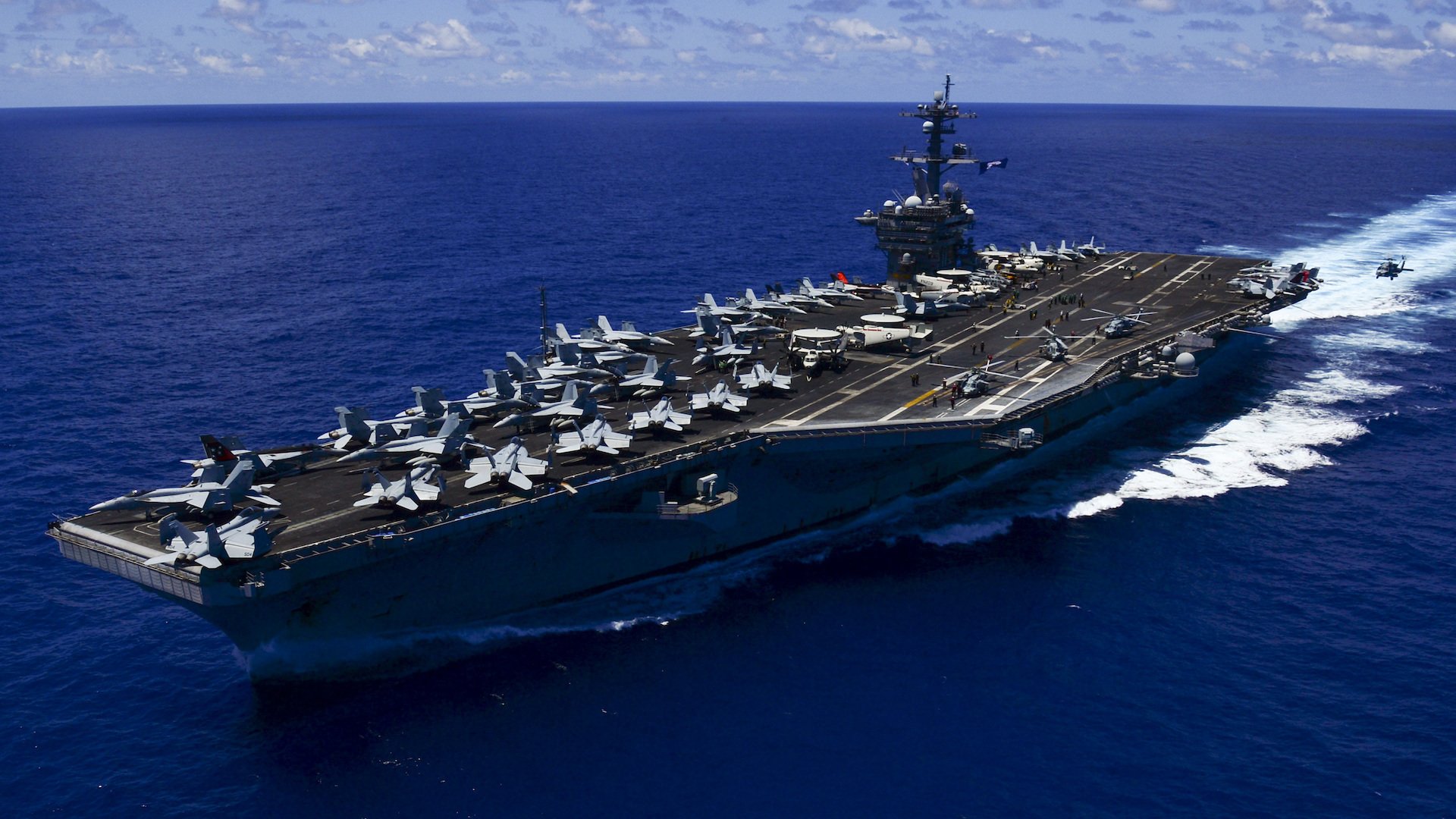
Aircraft carrier USS Carl Vinson, designated CVN 70, transits the Pacific Ocean on May 31, 2015. US Navy photo by Mass Communication Specialist 3rd Class Eric Coffer.
Aircraft carrier USS Carl Vinson made headlines in January 2022 when an F-35C Lightning II fighter jet crashed onto the ship’s flight deck. The accident was especially newsworthy because it occurred at the tail end of the F-35’s first operational deployment. Miraculously, nobody was killed, though six sailors, including the pilot, were injured.
Several weeks after the incident, the Carl Vinson returned as scheduled to its home port in San Diego, California, carrying one jet less than it had deployed with. Thus concluded the latest of nearly 20 deployments the ship has completed since it first set sail more than four decades ago. The latest, that is, but certainly not the most eventful.
Commissioned in 1982, the Carl Vinson, designated CVN 70, is the third Nimitz-class supercarrier. The flattop has served with the United States Pacific Fleet for more than 40 years. It measures roughly three football fields long and can carry about 5,000 crew in addition to more than 60 aircraft. The behemoth ship has an expected service life of 50 years, which means it is nearing retirement.
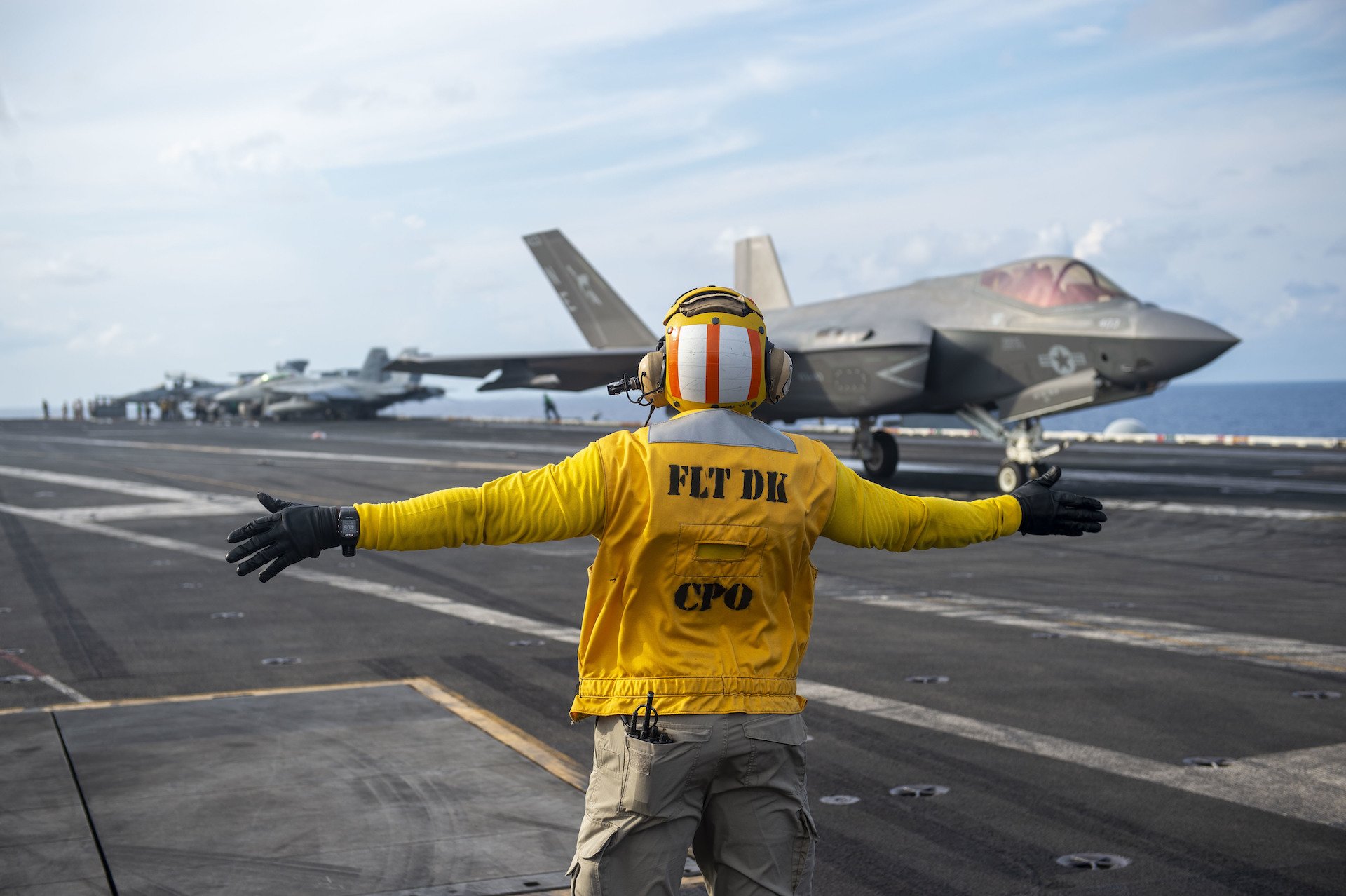
An F-35C Lightning II, assigned to the “Argonauts” of Strike Fighter Squadron (VFA) 147, taxis across the runway on the flight deck aboard Nimitz-class aircraft carrier USS Carl Vinson (CVN 70), Sept. 5, 2021. US Navy photo by Mass Communication Specialist Seaman Isaiah Williams.
Like an old mariner, the Carl Vinson has seen a lot in its days at sea. The F-35 mishap is just one page in a long and storied history that spans numerous oceans, military campaigns, and global conflicts from the Cold War on.
Related: WATCH: Leaked Video of Fiery F-35 Crash on Carl Vinson
The Cold War
The Carl Vinson — named for the late Georgia congressman — has found itself in the limelight before. The first time was in January 1982, at the height of the Cold War, while the ship was roughly 40 miles off the Virginia coast, undergoing final testing ahead of its maiden voyage. Evidently curious about the new supercarrier, Moscow dispatched a pair of Tu-95D reconnaissance planes to investigate. The Tu-95Ds circled the ship until they were intercepted by American aircraft and escorted back to Cuban airspace.
The Carl Vinson was commissioned later that year. Then, in March 1983, it deployed for the very first time, taking the scenic route to its new home port in California. From the Virginia coast, the flattop embarked on an 8-month voyage across the globe, stopping at such far-flung destinations as Monaco, Australia, Hong Kong, and South Korea, where it remained on standby for several days after an assassination attempt on the country’s president that raised the possibility of another full-scale war on the Korean Peninsula.
All the while, the Soviets continued to surveil the ship. On March 19, 1983, the ship’s Tomcat fighters intercepted a Russian reconnaissance plane flying 200 miles from its location. The Soviet pilot was so aggressive that it took the Tomcats more than two hours to escort the plane away from the ship.
The Carl Vinson began its second deployment in 1984. After conducting an exercise off the coast of Japan, the ship relieved another carrier in the Indian Ocean, where it would spend more than 100 days. Once again, America’s adversaries went to great lengths to keep tabs on the ship as it made its way south. The carrier logged more than 100 interceptions of Soviet and Iranian aircraft before returning to California in the spring of 1985.

Sailors man the rails as the USS Carl Vinson (CVN 70) returns to its home port on May 23, 2012. US Navy photo by Mass Communication Specialist 2nd Class Benjamin Stevens.
The supercarrier deployed twice more during the ’80s. Even as the Cold War started to wind down, Moscow continued to track the ship’s movements. In January 1987, Soviet aircraft were deployed to monitor Bering Sea exercises, which the Carl Vinson took part in. The Soviet pilots were menacing enough that Northern Pacific Group’s Battle Group Charlie received the Meritorious Unit Commendation for its display of combat readiness. Then, on its last deployment of the decade, the Carl Vinson’s Tomcats intercepted Soviet MiG-23 floggers.
Related: Portrait of a Ship: USS Abraham Lincoln
The 1990s
Along with the US military as a whole, the Carl Vinson’s mission shifted away from the Eastern bloc after the fall of the Iron Curtain. But before its new mission began, the ship had to undergo 28 months of maintenance and renovation in a Washington dry dock.
The lengthy remodeling, known as a complex overhaul, sidelined the Carl Vinson during Operation Desert Shield/Desert Storm. But the carrier was seaworthy in time to support post-war missions in the Persian Gulf. In 1994, the ship deployed to the region to help monitor Iraq’s airspace as part of Operation Southern Watch. A documentary film crew chronicled the six-month deployment, and Carrier: Fortress at Sea aired on the Discovery Channel the following year.
The Carl Vinson deployed twice more in the ’90s. During one of those deployments, the entire crew became Golden Shellbacks. The Shellback ceremony — a Navy tradition that dates back centuries — occurs when sailors on a ship cross the equator for the first time. Crew members earn the rare status of Golden Shellback when they simultaneously cross both the equator and the international date line, which is what the Carl Vinson did in the fall of 1996.
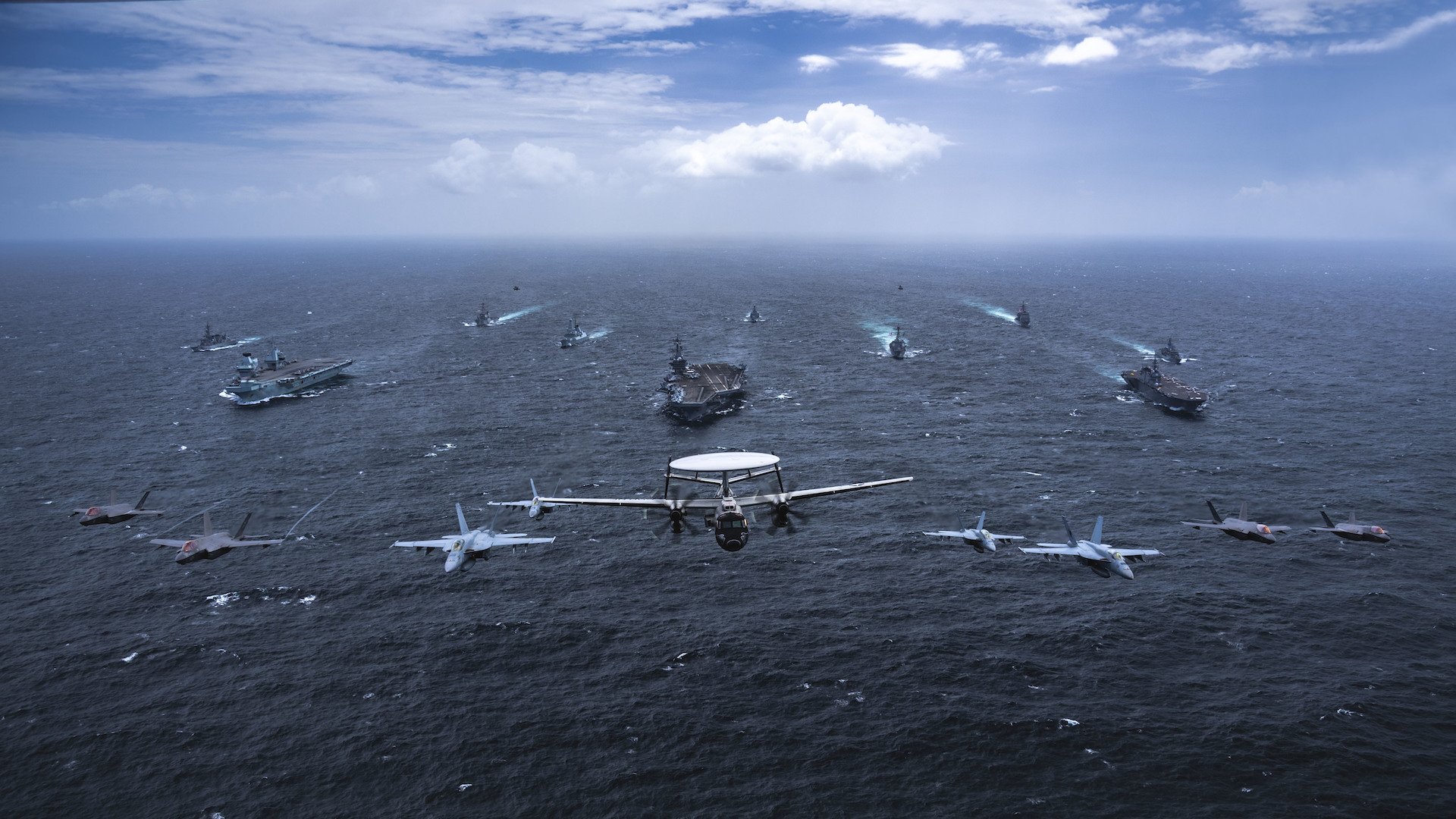
The USS Carl Vinson participates with other ships and aircraft from the US Navy, Royal Australian Navy, Japan Maritime Self-Defense Force, and UK Royal Navy in the Maritime Partnership Exercise 2021, on Oct. 17, 2021. US Navy photo by Mass Communication Specialist 2nd Class Haydn N. Smith.
For part of each deployment in the late ’90s, the ship again supported Operation Southern Watch. The supercarrier participated in bombing campaigns against Iraqi targets during both deployments. In 1996, Tomcats launched from the Carl Vinson to escort bombers over Iraq as part of Operation Desert Strike. Then in 1998, the ship launched aircraft that carried out a dozen airstrikes on Iraqi military sites as part of Operation Desert Fox.
Related: USS The Sullivans: The Tragic Story Behind the Name
The Global War on Terror
The USS Carl Vinson deployed 10 times between 2000 and 2023. The ship kicked off the new millennium by hosting a Hollywood film crew. In February 2001, scenes for the blockbuster war movie Behind Enemy Lines were shot on the deck of the Carl Vinson. Of course, at the time, the ship’s crew members had no idea that they would soon be responding to one of the deadliest attacks on American soil.
Word of the Sept. 11 terrorist attacks reached the Carl Vinson while it was rounding the southern tip of India. The supercarrier and the rest of its battle group immediately sped to the Persian Gulf and remained there as they awaited orders. Then, on Oct. 7, the group launched the first strikes of the Global War on Terror. In 72 days, the battle group’s aircraft flew more than 4,000 combat sorties and dropped roughly 2 million pounds of ordnance.
The Carl Vinson deployed twice more before undergoing Refueling and Complex Overhaul, or RCOH, which began in 2005. Nuclear propulsion powers the supercarrier, so it only requires one midlife top-off. However, the process takes several years. The Carl Vinson returned to the fleet with full reactors in 2009.
The following year, the Carl Vinson provided disaster relief to Haiti after an earthquake rocked the country on Jan. 12. Aboard the ship, CNN medical correspondent and noted neurosurgeon Dr. Sanjay Gupta helped the Navy’s medical team remove concrete from a 12-year-old Haitian girl’s skull. But perhaps the Carl Vinson’s most famous moment came on May 2, 2011, when Usama bin Laden was buried at sea from its deck.
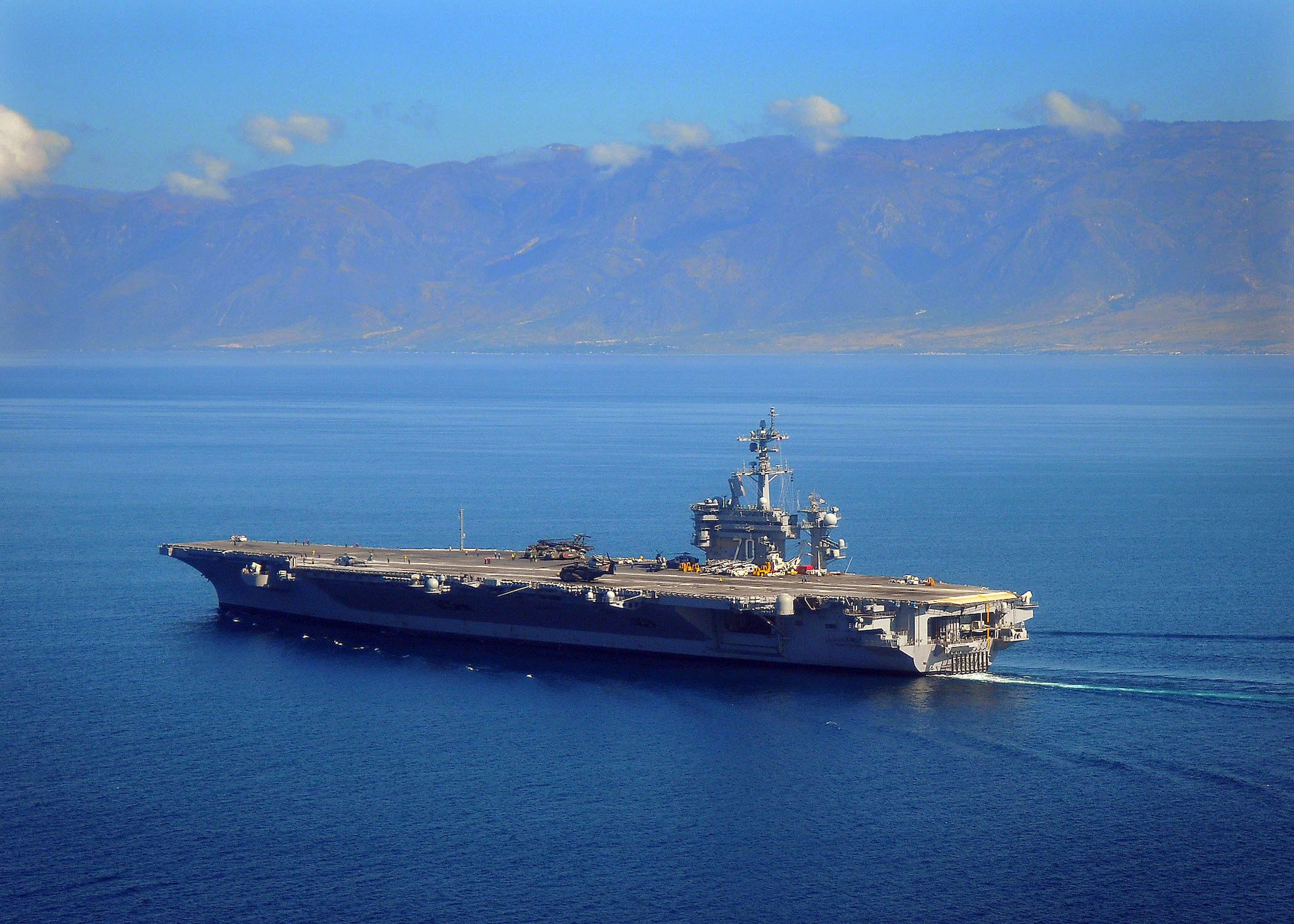
The USS Carl Vinson maneuvers off the coast of Haiti. The supercarrier and Carrier Air Wing 17 conducted humanitarian and disaster relief operations as part of Operation Unified Response after a 7.0 magnitude earthquake caused severe damage near Port-au-Prince on Jan. 12, 2010. US Navy photo by Petty Officer 3rd Class Daniel Barker.
For the remainder of the GWOT, aircraft continued to launch from the Carl Vinson for various missions in Iraq and Syria. Between August 2014 and June 2015, Carrier Strike Group 1 aircraft flew more than 12,000 sorties, including more than 2,000 combat missions against ISIS.
That would be the Carl Vinson’s last trip to the Persian Gulf. Since then, the supercarrier has stuck to the Pacific and Indian Oceans. Its latest deployment — the one that made headlines when the F-35 slid off the Carl Vinson’s front deck into the South China Sea — began in 2021 and ended in 2022. At the moment, the old mariner is back in its home waters, catching its breath for whatever final adventures might be in store between now and its retirement in 2032.
Read Next: Heroism & Guts — What It Takes To Earn the Navy Cross
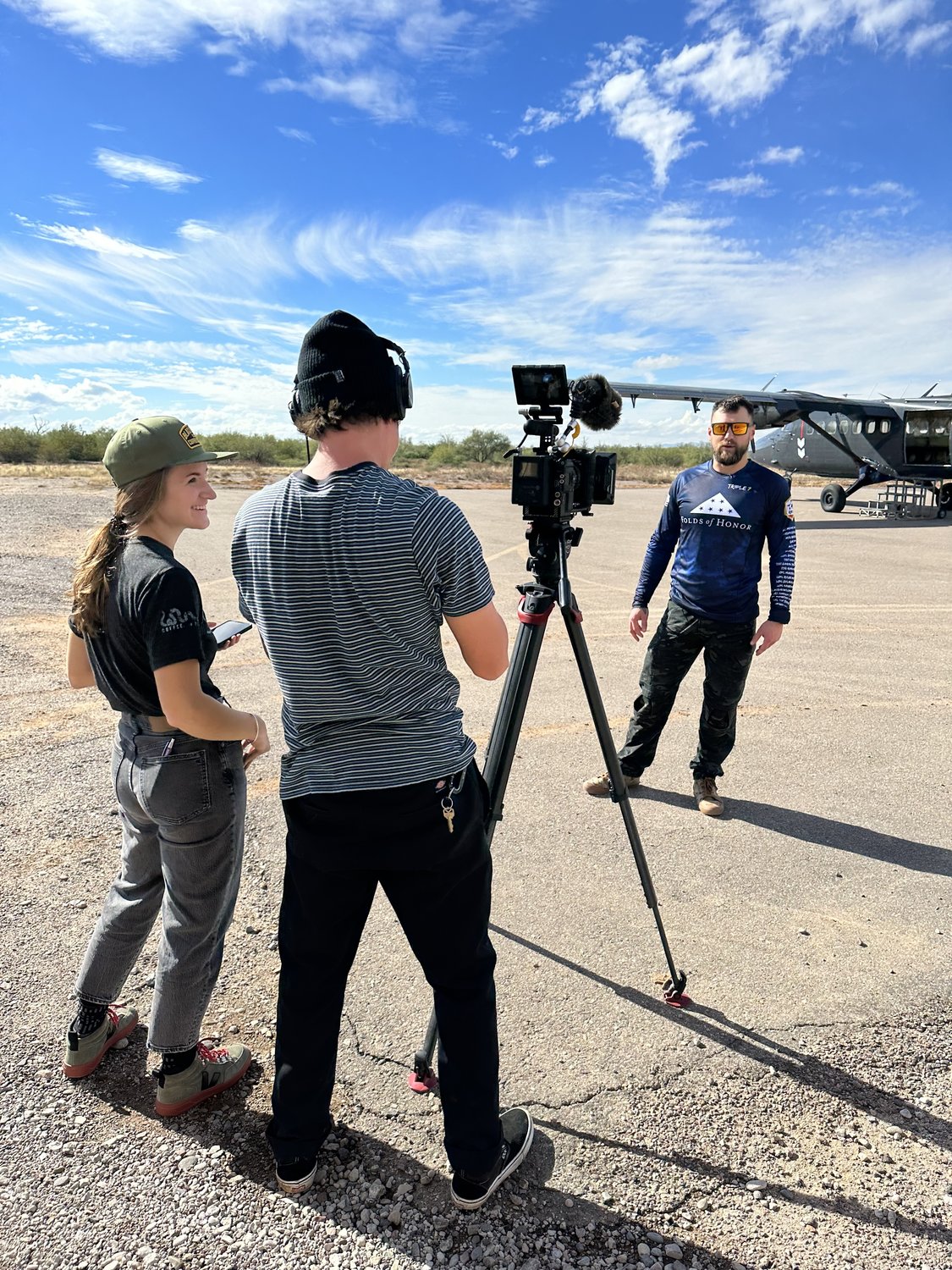
Jenna Biter is a staff writer at Coffee or Die Magazine. She has a master’s degree in national security and is a Russian language student. When she’s not writing, Jenna can be found reading classics, running, or learning new things, like the constellations in the night sky. Her husband is on active duty in the US military. Know a good story about national security or the military? Email Jenna.
BRCC and Bad Moon Print Press team up for an exclusive, limited-edition T-shirt design!
BRCC partners with Team Room Design for an exclusive T-shirt release!
Thirty Seconds Out has partnered with BRCC for an exclusive shirt design invoking the God of Winter.
Lucas O'Hara of Grizzly Forge has teamed up with BRCC for a badass, exclusive Shirt Club T-shirt design featuring his most popular knife and tiomahawk.
Coffee or Die sits down with one of the graphic designers behind Black Rifle Coffee's signature look and vibe.
Biden will award the Medal of Honor to a Vietnam War Army helicopter pilot who risked his life to save a reconnaissance team from almost certain death.
Ever wonder how much Jack Mandaville would f*ck sh*t up if he went back in time? The American Revolution didn't even see him coming.
A nearly 200-year-old West Point time capsule that at first appeared to yield little more than dust contains hidden treasure, the US Military Academy said.












